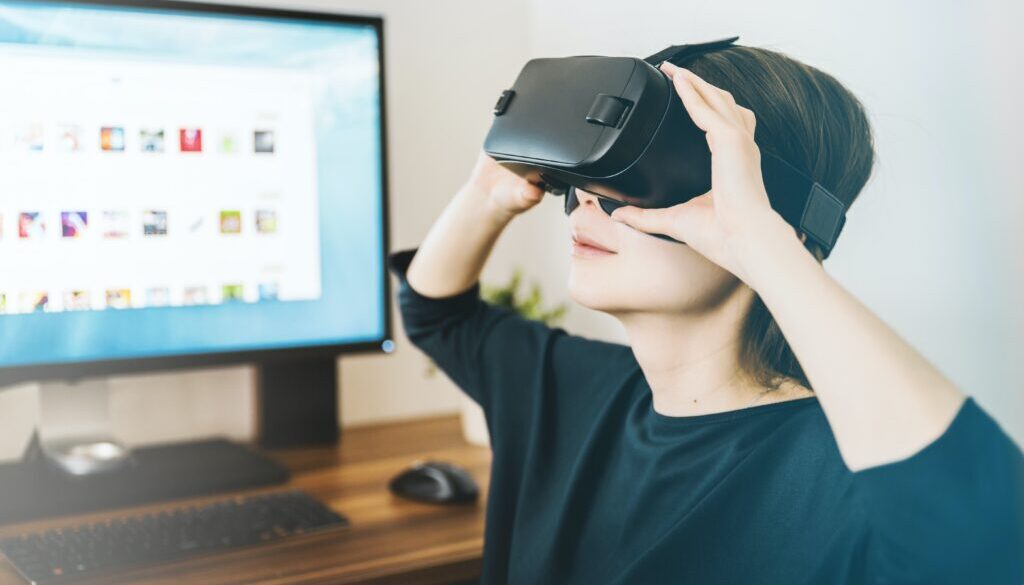Introduction
In today’s rapidly evolving technological landscape, augmented reality (AR) has emerged as a transformative force that promises to reshape our daily experiences. Augmented reality, often abbreviated as AR, is a cutting-edge technology that overlays digital information, such as 3D models, videos, and graphics, onto the real world through various devices like smartphones, smart glasses, and even contact lenses.
1. Introduction to Augmented Reality
Augmented reality is a technology that bridges the gap between the digital and physical worlds. It enhances our perception of reality by adding digital elements, creating a seamless blend of the virtual and real environments. Unlike virtual reality (VR), which immerses users in entirely digital worlds, AR enriches the real world with supplementary information and interactive experiences.
2. The Evolution of AR Technology
AR technology has come a long way since its inception. Initially, it was primarily used for military and industrial applications. However, with the proliferation of smartphones, AR became accessible to the masses. Today, AR apps are commonplace, with Snapchat filters and Pokémon GO being notable examples of early consumer AR experiences.
3. AR in Education
In the realm of education, AR has the potential to revolutionize how students learn. Imagine history lessons coming to life as students explore ancient civilizations through AR-enhanced textbooks or biology lessons where students can dissect virtual organisms. AR makes learning engaging and interactive.
4. AR in Healthcare
In healthcare, AR has applications ranging from medical training to patient care. Surgeons can use AR to visualize patient data during surgeries, and patients can benefit from AR-guided physical therapy exercises at home.
5. AR in Gaming
Gaming has been one of the early adopters of AR technology. Games like Pokémon GO have demonstrated the appeal of combining gaming with real-world exploration. Expect more immersive and interactive gaming experiences in the future.
6. AR in Retail
In the retail sector, AR is changing the way consumers shop. Virtual try-ons and AR-powered product displays allow customers to make more informed purchasing decisions, enhancing the overall shopping experience.
7. AR in Real Estate
AR is transforming the real estate industry by providing virtual property tours. Potential buyers can explore properties from the comfort of their homes, saving time and resources for both buyers and sellers.
8. AR in Travel and Tourism
Travelers can use AR apps to enhance their experiences by receiving real-time information about landmarks, historical sites, and nearby attractions. This technology makes exploring new destinations more enriching.
9. AR in the Automotive Industry
Automakers are integrating AR into vehicles to provide drivers with augmented navigation and safety information, ultimately making driving safer and more efficient.
10. Challenges and Concerns
While AR holds great promise, it also faces challenges, including privacy concerns, technological limitations, and the need for widespread adoption. Overcoming these hurdles is crucial for the continued growth of AR.
11. The Future of Augmented Reality
The future of AR is incredibly exciting. With advancements in hardware and software, AR will become more accessible and sophisticated. Expect AR glasses that seamlessly integrate into our daily lives, revolutionizing how we interact with information.
12. Conclusion
In conclusion, augmented reality is poised to unlock a future where the boundaries between the digital and physical worlds blur. Its applications span across education, healthcare, gaming, retail, real estate, travel, and automotive industries. However, addressing challenges and ensuring responsible use are essential as we embrace this transformative technology.
13. FAQs
Q1: How does augmented reality work?
Augmented reality works by using sensors and cameras to detect the real-world environment and overlaying digital content onto it through devices like smartphones or glasses.
Q2: What are the privacy concerns associated with AR?
Privacy concerns in AR arise from the collection and potential misuse of personal data through AR apps and devices. It’s crucial to protect user privacy in AR experiences.
Q3: Are AR glasses widely available yet?
While AR glasses are in development, they are not yet widely available to consumers. However, they hold promise for the future.
Q4: How can businesses benefit from incorporating AR?
Businesses can benefit from AR by enhancing customer experiences, improving employee training, and streamlining operations through innovative AR applications.
Q5: What industries are most likely to be transformed by AR in the near future?
Industries such as healthcare, education, and retail are expected to undergo significant transformations with the integration of AR technology.
Unlock the future with augmented reality and experience a world where digital and reality seamlessly coexist. Embrace this technological revolution and stay ahead of the curve











